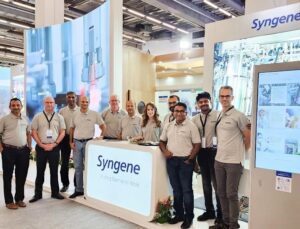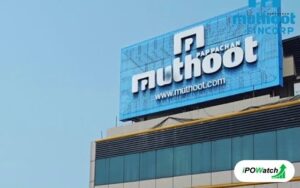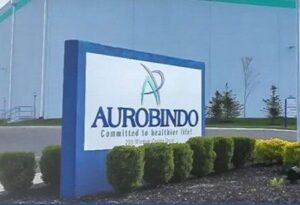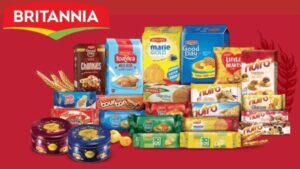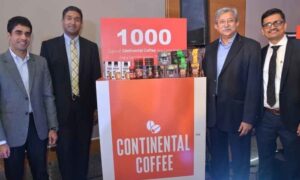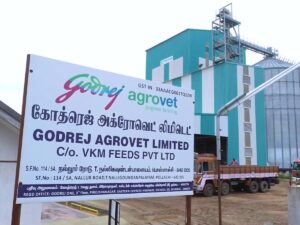1. At a Glance
Welcome toGodrej Agrovet Limited (GAVL)— India’s agri-conglomerate that milks cows, breeds chickens, squeezes oil palms, sprays crops, and somehow still has time to deal with SEBI warning letters. At ₹ 649 per share, the company commands amarket cap of ₹ 12,485 crore, but the recent 20% price fall in 3 months feels like watching your tractor slide on wet mud.
InQ2 FY26, revenue stood at ₹ 2,567 crore (+4.85% YoY), butPATdropped 17.6% to ₹ 92.6 crore.Operating marginsheld at 8%,ROE17.7%, andROCE16.6%. The balance sheet is stretched tighter than a farmer’s budget before harvest —debtrose from ₹ 1,400 crore to ₹ 1,923 crore as of Sep 2025.
Still, Godrej Agrovet isn’t your average mandi-trader. It’s the rare agribusiness that also throws a boardroom party when EBITDA margins touch 9%. But with the SEBI’s warning for delayed disclosures and a new CEO in the hot seat, the next quarter promises as much drama as a daily soap titledKhaad, Cow & Corporate Karma.
2. Introduction
Godrej Agrovet is that overachieving cousin in the Godrej family—busy running five different agribusinesses while juggling government MoUs, dairy expansions, and now, a SEBI slap on the wrist.
Founded on the noble mission of improving farmer productivity, it’s now a ₹ 10,000 crore+ machine operating from cattle feed to palm oil to pesticides to paneer. But despite its fancy R&D and premium Jersey milk ads, its stock performance has been as cold as that same Jersey milk left overnight.
In the past year, shareholders lost 10.5%, and in the last 3 months alone 20%. Meanwhile, management has been expanding into palm refineries, signing ₹ 960 crore MoUs, and bringing in a new CEO —Sunil Kataria, the ex-Godrej Consumer Products boss who knows a thing or two about turning soaps into gold.
The business is classic Godrej — heritage brand + R&D + diversification. But the real question: can this conglomerate balance milk, meat, and money without spilling any?
3. Business Model – WTF Do They Even Do?
If you ever wanted to invest in something that feeds cows, fattens chickens, crushes palm fruit, ferments milk, and sells pesticides — look no further.Godrej Agrovetis the buffet of Indian agribusiness.
Animal Feed (47%)– Their biggest revenue cow. They produce compound feed for cattle, poultry, fish, and shrimp. Even Bangladesh eats out of Godrej’s trough via their JV ACI Agrovet.
Dairy (17%)– Operated viaCreamline Dairy Productsunder theJerseybrand, selling everything from curd to lassi. They recently hiked their stake to 99.3%, so Jersey is now a full Godrej cow.
Vegetable Oil (14%)– India’s largest oil-palm processor with 30% market share. Think of them as “the Adani Wilmar of the south but with trees.” They work with 11,000 farmers managing 2 lakh hectares of plantations.
Crop Protection (13%)– Via subsidiaryAstec Lifesciences, they sell pesticides, fungicides, and regulators. Astec’s enterprise division had a bad year, proving that even chemicals can get depressed.
Poultry & Processed Foods (9%)– Their JV with Tyson Foods brings youReal Good ChickenandYummiez, the products that confuse vegetarians and excite gym-goers.
Together, this makes GAVL an agricultural Swiss-army knife: diversified, complex, and dangerous in the wrong hands.
4. Financials Overview
| Metric | Latest Qtr (Sep FY26) | Same Qtr Last Year | Previous Qtr | YoY % | QoQ % |
|---|---|---|---|---|---|
| Revenue (₹ cr) | 2,567 | 2,449 | 2,614 | +4.8 | −1.8 |
| EBITDA (₹ cr) | 213 | 223 | 270 | −4.5 | −21.1 |
| PAT (₹ cr) | 92.6 | 112 | 149 | −17.6 | −37.8 |
| EPS (₹) | 4.8 | 5.8 | 8.4 | −17.6 | −42.6 |
Annualized EPS ≈ ₹ 19.2 → P/E ≈ 34×.
Commentary:Revenue up, profits down — the classic Indian corporate diet. Input costs and flat realizations hit margins, and management called it
“temporary.” Investors call it “permanent déjà vu.”
5. Valuation Discussion – Fair Value Range (Educational Only)
Let’s take three neutral lenses:
(a) P/E MethodEPS TTM = ₹ 22.6Industry P/E = 19× (Agro-FMCG average)
- Optimistic case: 22.6 × 30 = ₹ 678
- Base case: 22.6 × 25 = ₹ 565→ Fair Value Range: ₹ 565 – ₹ 680 per share
(b) EV/EBITDA MethodEV = ₹ 13,842 cr, EBITDA = ₹ 850 cr → EV/EBITDA ≈ 16×Industry average ≈ 14×If re-rated to 14× → EV = ₹ 11,900 cr → Implied equity ≈ ₹ 10,500 cr → ₹ 550 /share
(c) DCF (approx)FCF FY25 = ₹ 550 cr, growth 8%, WACC 10% → Fair Value ≈ ₹ 600 – ₹ 700
📘Disclaimer:This fair-value range (₹ 550 – ₹ 700) is purely for educational discussion, not investment advice.
6. What’s Cooking – News, Triggers, Drama
Because no Godrej quarter is complete without news, here’s the full platter:
- New CEO Alert:Sunil Kataria (former GCPL CEO) took charge on 1 Sep 2025. Balram Yadav retires after 25 years of managing everything from feed mills to farm politics.
- SEBI Warning Letter (29 Sep 2025):Astec Lifesciences delayed four regulatory disclosures by 2,725, 383, 39 and 11 days. SEBI sent a polite “don’t do it again.” Astec responded by not responding publicly at all.
- MoU with MoFPI:₹ 960 crore investment to build five food-processing and R&D facilities by FY27. That’s right — they’re literally cooking growth.
- Creamline Dairy:Godrej now owns 99.3% after buying 47% from promoters in Mar–May 2025. Expect more curd ads with less family drama.
- Capex:New feed plant in Maharashtra (₹ 110 cr) and new oil-refinery (400 MTPD) under commissioning.
- EBITDA Outlook:Mgmt guides for 9–10% margins despite global commodity madness.
In short, Q2 FY26





